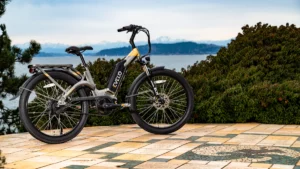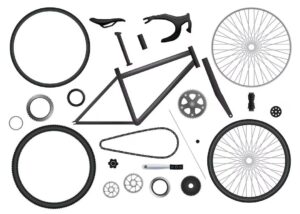重要な自転車コンポーネントとして, フロントサスペンションフォークは、不均一な地形の影響を軽減するのに役立ちます, 衝撃を吸収します, 牽引力を維持します, それにより、ライダーの快適さを高めます, コントロール, 全体的なパフォーマンス. 岩だらけのトレイルに取り組むかどうか, ルートレーディングパスをナビゲートします, または、単に都市の障害を巡る, 信頼できるフロントサスペンションフォークの存在は、乗り心地の質と楽しみに大きな違いを生むことができます. 明らかに, さまざまな種類のフロントサスペンションフォークを理解することは、ライディングエクスペリエンスに大きな影響を与える可能性があります. このガイドは、の複雑さを解明することを目的としています 11 フロントサスペンションフォークの種類, あなたの自転車のニーズに合わせて調整された情報に基づいた選択をするためにあなたに知識を装備する.
サスペンションフォークとは何ですか?
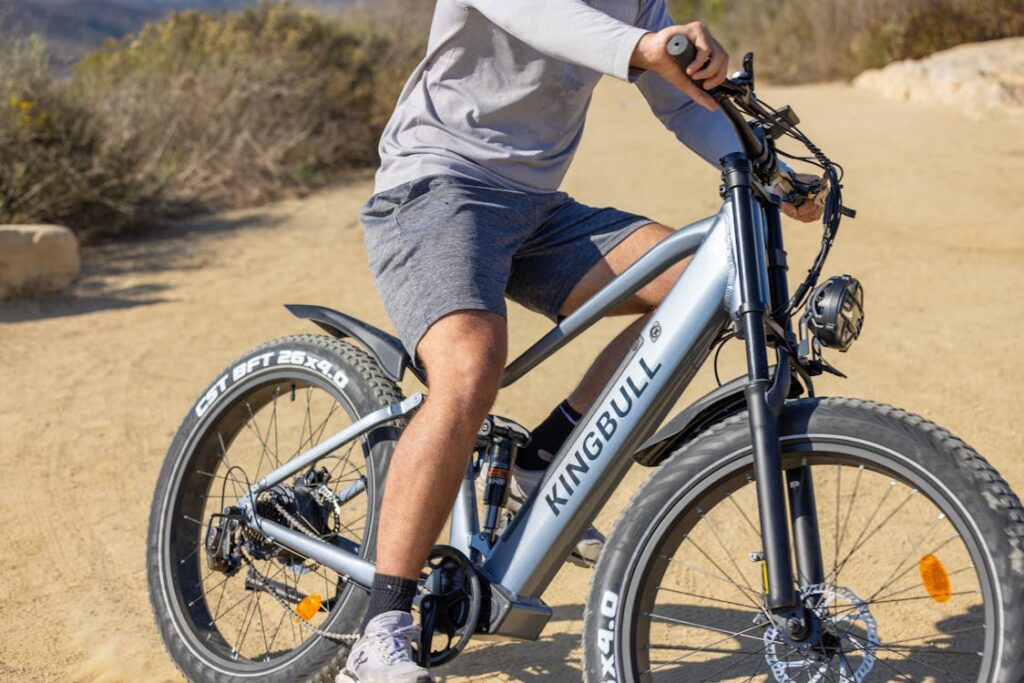
サスペンションフォーク, などの素材から作られています アルミニウム, 炭素繊維, またはスチール, 伸縮式チューブハウジングスプリングのシステムで構成されています, ダンパー, その他のメカニズム. これらのコンポーネントは、ショックを吸収するために相乗的に機能します, トラクションを強化します, 荒れた地形のスムーズなナビゲーションを促進します. このエンジニアリングマーベルは、サイクリストが快適さを高めて不均一な表面に取り組むことができます, 安定性, と自信, 爽快で制御されたライディングエクスペリエンスを確保します.
多様なデザインがあります, それぞれが明確な機能を提供します, 利点, および制限. 従来のコイルスプリングフォークから革新的なエアスプリングバリエーションまで, そして、油圧の驚異から機械的な驚異まで, 自転車フォークメーカー さまざまな好みとライディングスタイルに対応します. 自転車サスペンションフォークタイプのニュアンスを理解することで、サイクリストが特定のニーズと好みに合わせて調整された情報に基づいた決定を下すことができます.
エアスプリングサスペンションフォーク
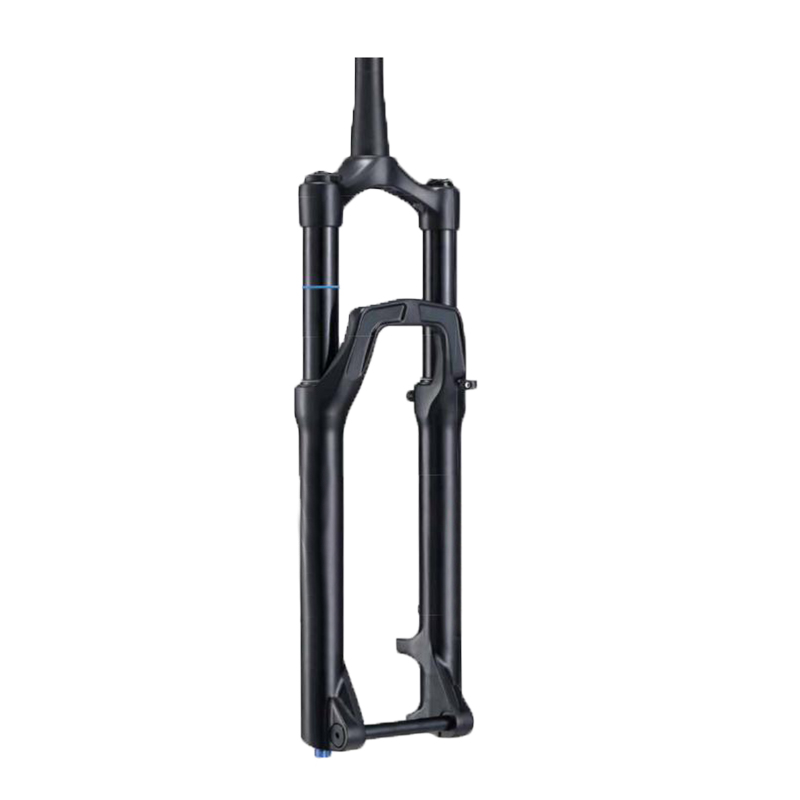
エアスプリングサスペンションフォークは、圧縮空気チャンバーを利用して、ライダーの好みと地形の条件に合わせて調整可能なサスペンションパフォーマンスを提供します. これらのフォークは、軽量の構造に好まれています, 調整性, と応答性, 幅広い好みに合わせてカスタマイズ可能なライディングエクスペリエンスを提供する.
長所と短所
長所:
- 軽量構造は、全体的な自転車の重量を最小限に抑えます, 敏ility性と操縦性の向上.
- 調整可能な空気圧により、ライダーはさまざまな地形やライディングスタイルのサスペンション特性を微調整できます.
- レスポンシブパフォーマンスは、攻撃的なライディング中に優れた小さなバンプコンプライアンスとサポートを提供します.
短所:
- 最初のセットアップとチューニングには、最適なパフォーマンスを実現するために専門知識が必要になる場合があります.
- エアシールとチャンバーは、破片や衝撃による損傷の影響を受けやすい, 定期的なメンテナンスが必要です.
- コイルスプリングフォークと比較してより高い初期コスト, 潜在的に予算に配慮したサイクリストを阻止します.
エアフォークの典型的なケア
エアフォークは通常、潤滑と減衰のためにオイルを必要とします. 空気室はスプリングメカニズムを提供します, オイルは、シールなどの内部成分の潤滑に不可欠です, ブッシング, 時間の経過とともにスムーズで一貫したパフォーマンスを確保するための減衰回路.
油圧サスペンションフォーク
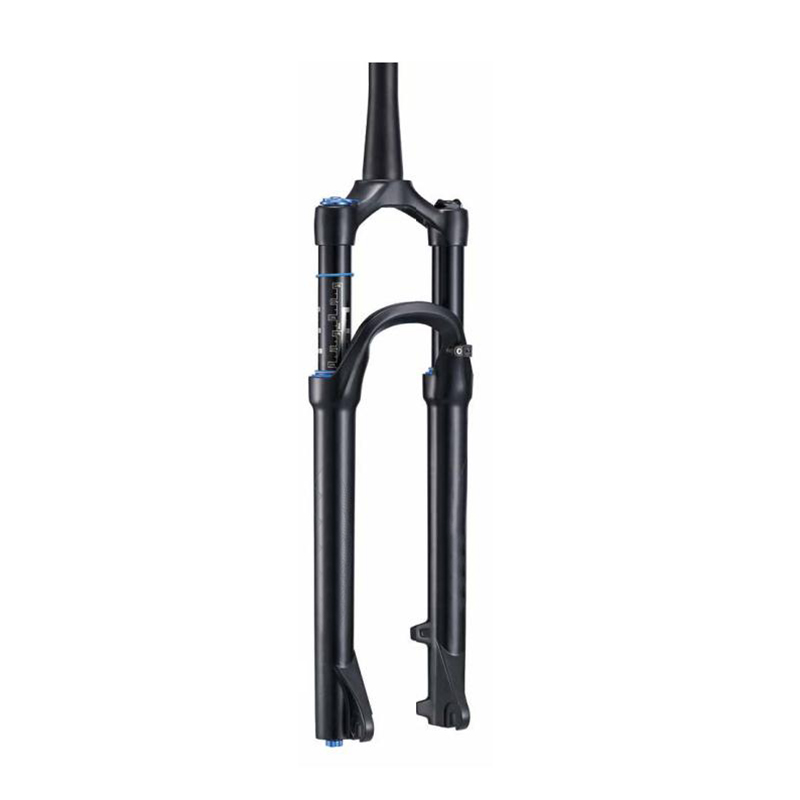
油圧サスペンションフォークは、流体ベースの減衰システムを利用して圧縮とリバウンド減衰を調節します, ライダーの好みに合わせた正確な制御と減衰特性を提供する. これらのフォークは、スムーズで一貫したパフォーマンスで有名です, 最適なサスペンションパフォーマンスを求めている目の肥えたライダーの間でそれらを人気にする.
長所と短所
長所:
- 例外的な減衰制御は、さまざまな地形をめぐる豪華で制御された乗り心地を提供します.
- 油圧システムは、幅広い調整オプションを提供します, ライダーがサスペンションの動作を好みに微調整できるようにします.
- さまざまな温度と条件下での一貫したパフォーマンス, あらゆるライディング環境で信頼できるパフォーマンスを確保します.
短所:
- 他のサスペンションフォークタイプと比較して、初期コストが高くなります, 予算に配慮したサイクリストへのアクセシビリティを潜在的に制限します.
- 複雑な内部コンポーネントには、メンテナンスとサービスのために特別なツールと専門知識が必要になる場合があります.
- 時間の経過とともに液体の漏れやシール摩耗の影響を受けやすい, 定期的な検査とメンテナンスが必要です.
テーパーステアラーチューブフォーク
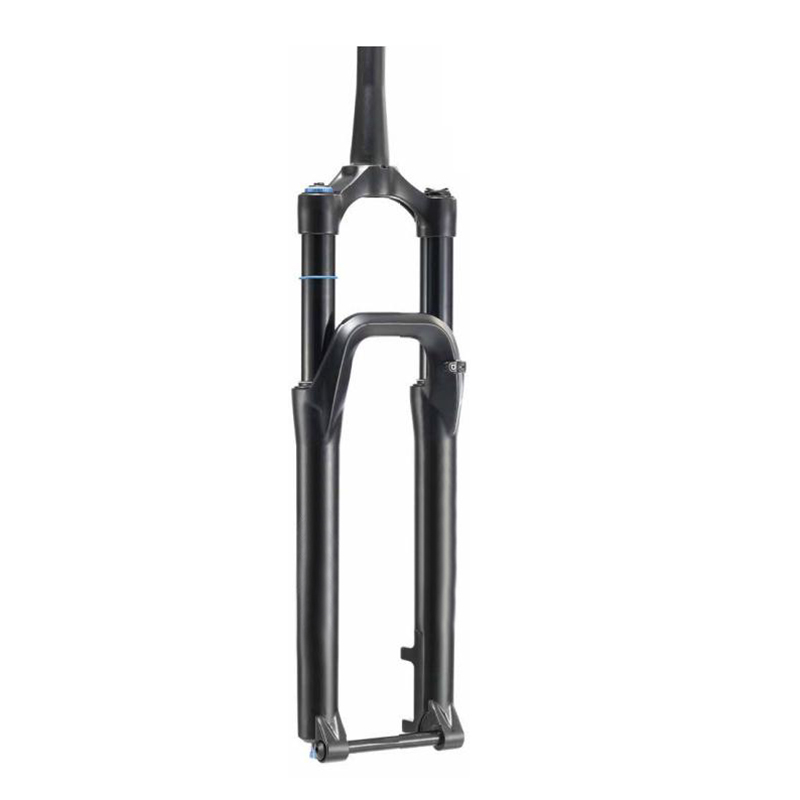
テーパーステアラーチューブフォークには、ステアラーチューブの直径がより大きな寸法に移行するテーパーデザインがあります。, 強化された剛性を提供します, 強さ, 最新のフレームデザインとヘッドチューブ構成との互換性.
長所と短所
長所:
- ストレートステアラーチューブフォークと比較して、剛性とステアリング精度の改善, 特に重い荷物や積極的なライディング操作の下.
- 最新のフレームジオメトリとヘッドチューブの標準との互換性の向上, さまざまな自転車モデルや分野で広範囲にわたる採用を確保します.
- 従来のストレートステアラーチューブフォークと比較した重量の減少, 全体的な自転車の俊敏性と操縦性を最適化します.
短所:
- 古いフレームデザインとヘッドセット標準との限られた互換性, 潜在的に、フレーム変更または改造にアダプターソリューションが必要です.
- ストレートステアラーチューブフォークと比較してより高いコスト, 特に高度な材料と製造技術を備えたプレミアムフォークモデルで.
- アフターマーケットステムとヘッドセットコンポーネントの潜在的な互換性の問題は、自転車のアセンブリとカスタマイズ中に慎重に検討する必要があります.
テーパーステアラーチューブフォークの互換性の考慮事項
テーパーステアラーチューブフォークを選択するとき, ライダーは、自転車フレームのヘッドチューブ寸法とヘッドセットの仕様との互換性を確保する必要があります. さらに, アフターマーケットステムとヘッドセットコンポーネントとの互換性を確認することで、互換性の問題を防ぎ、既存の自転車セットアップとのシームレスな統合を確保することができます.
ストレートステアラーチューブフォーク
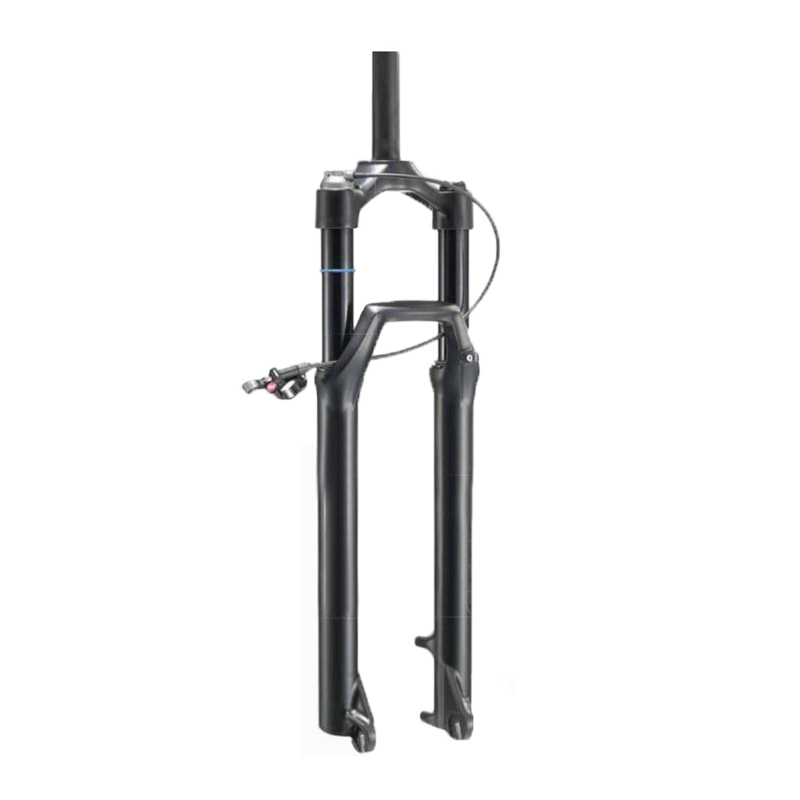
ストレートステアラーチューブフォークは、均一な直径のステアラーチューブデザインを備えています, シンプルさを提供します, 汎用性, 幅広いフレームデザインとヘッドセット標準との互換性. 最新の高性能自転車ではあまり一般的ではありません, 特定のアプリケーションや予算に優しい自転車モデルでは、ストレートステアラーチューブフォークが人気のままです.
長所と短所
長所:
- さまざまなフレームジオメトリとヘッドセット標準を備えた多用途の互換性, さまざまな自転車モデルと分野で広範囲にわたる採用を確保します.
- テーパーステアラーチューブフォークと比較して、簡素化されたアセンブリとメンテナンス, 故障の潜在的なポイントと互換性の問題を減らす.
- 予算に配慮したサイクリストまたは高度なシステムの複雑さなしに基本的なサスペンションソリューションを求めている人のための費用対効果の高いオプション.
短所:
- テーパーステアラーチューブフォークと比較して、剛性とステアリング精度の低下, 特に重い荷物や積極的なライディング操作の下.
- 高性能ストレートステアラーチューブフォークオプションの限られた可用性, 高度なサスペンション機能とテクノロジーを探しているライダーの選択を潜在的に制限する.
- テーパーステアラーチューブフォークと比較した潜在的な重量ペナルティ, 特に、スチールまたは合金のステアラーチューブを備えたモデルで.
ストレートステアラーチューブフォークの一般的な用途
高性能の自転車デザインでの人気の低下にもかかわらず, ストレートステアラーチューブフォークは、都市の通勤などの特定のアプリケーションで普及したままです, レクリエーションライディング, エントリーレベルのマウンテンバイク.
油圧サスペンションフォークのメンテナンスのヒント
油圧サスペンションフォークの最適なパフォーマンスと寿命を維持するため, シールの定期的な検査, 流体レベル, そして、減衰設定が不可欠です. さらに, メーカーが推奨するサービス間隔を追跡し、高品質の懸濁液液を利用することで、油圧成分の寿命を延ばし、時間の経過とともに一貫したパフォーマンスを確保することができます.
ロックアウトサスペンションフォーク
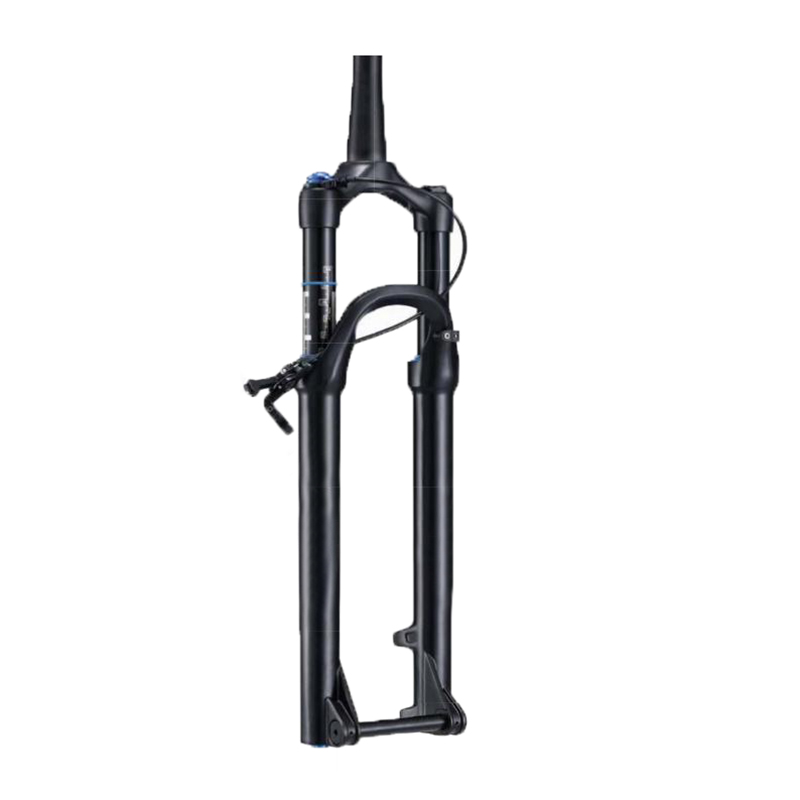
ロックアウトサスペンションフォークは、ライダーが一時的にサスペンション旅行を無効にすることを可能にする機械的または油圧メカニズムを備えています, 効果的に “ロックアウト” フォークとそれを剛性プラットフォームに変換します. この機能は、サスペンションの動きが不要なトレイルの滑らかまたは上り坂のセクションでペダル効率を維持するのに特に便利です.
長所と短所
長所:
- 滑らかまたは上り坂の地形でのペダル効率と電力伝達の改善, ロックアウトメカニズムによって提供される剛性プラットフォームのおかげで.
- サスペンションボビングと動きを通じてエネルギー損失を最小限に抑えることにより、クライミングパフォーマンスと牽引力を高めました.
- さまざまなフレームデザインとライディングスタイルとの多目的な互換性は、さまざまな自転車モデルと分野で広範囲にわたる採用を保証します.
短所:
- サスペンションがロックアウトされたときに、ラフまたはテクニカルな地形の快適さと制御を減らしました, 潜在的に侵害されている牽引力と取り扱い.
- 非ロックアウトフォークと比較して複雑さが増加しました, 潜在的に、より高いメンテナンス要件と障害ポイントにつながる.
- アフターマーケットのステムおよびハンドルバーコンポーネントの互換性の問題を受けやすい, 自転車のアセンブリとカスタマイズ中に慎重に検討する必要があります.
ロックアウト機能を効果的に利用する方法
ロックアウト機能を効果的に利用します, ライダーは、サスペンションの動きがペダル効率に不要または有害なトレイルの滑らかまたは上り坂のセクションに遭遇するときにロックアウトメカニズムに関与する必要があります. 逆に, 快適さを最大化するために、下降したり、荒れた地形に乗ったりするときにロックアウトを解除する必要があります, 牽引, サスペンションフォークによって提供される制御. さまざまなロックアウト設定を実験し、ペダリングの効率と乗り心地への影響を観察することで、さまざまなトレイル条件や好みのためにライダーがサスペンションのセットアップを最適化するのに役立ちます.
コイルスプリングサスペンションフォーク
コイルスプリングサスペンションフォークは、コイル状の金属製スプリングを利用して衝撃を吸収し、乗り物中にクッションを提供します. これらのフォークは耐久性で知られています, 信頼性, さまざまな地形で一貫したパフォーマンス. コイルスプリングフォークの圧縮およびリバウンド特性は、個々のライダーの好みに合わせて調整することができます.
長所と短所
長所:
- 堅牢な構造は、寿命と信頼性を保証します.
- 一般に、他のサスペンションフォークタイプと比較してより手頃な価格です.
- 最小限のメンテナンス要件, 手間のかからないパフォーマンスを求めるライダーに最適です.
短所:
- 通常、エアスプリングカウンターパートよりも重い, 全体的な自転車の重量に影響を与える可能性があります.
- より高度なサスペンションシステムと比較して、限られた調整可能性.
- 経験するかもしれません “コイルバインド” 極端な圧縮の下, サスペンションの有効性の低下につながります.
コイルスプリングフォークに最適です
コイルスプリングサスペンションフォークは、耐久性があるアプリケーションで優れています, シンプルさ, 手頃な価格が最重要です. 彼らはエントリーレベルのマウンテンバイクに適しています, 通勤自転車, より洗練されたシステムの複雑さなしに信頼できるサスペンションパフォーマンスを求めているレクリエーションライダー.
機械式サスペンションフォーク
機械式サスペンションフォーク, エラストマーフォークとしても知られています, エラストマー材料を利用して、乗り物中にクッションと衝撃吸収を提供する. 現代の自転車デザインではあまり一般的ではありませんが, メカニカルフォークはシンプルさを提供します, 信頼性, およびメンテナンスの低い要件, カジュアルなライダーや都市の通勤者に適しています.
長所と短所
長所:
- シンプルで信頼性の高い設計は、メンテナンス要件と潜在的な失敗ポイントを最小限に抑える.
- 軽量の構造により、自転車の敏ility性と操作性が向上します, 特に都市環境で.
- エントリーレベルのサイクリストや、高度なシステムの複雑さなしに基本的なサスペンションソリューションを求めている人向けの費用対効果の高いオプション.
短所:
- 他のサスペンションフォークタイプと比較して、限られた調整可能性, 乗り心地の質とパフォーマンスを潜在的に妥協します.
- エラストマー材料が摩耗するにつれて、時間の経過に伴うパフォーマンスの低下の影響を受けやすい.
- 一般的に、油圧またはエアスプリングフォークと比較して、減衰の高周波への影響を減衰させるのに効果が低い.
機械式と他のタイプのフォークのパフォーマンスの違い
メカニカルサスペンションフォークは、シンプルさと信頼性を提供します, 同じレベルの調整性を提供しない場合があります, 豪華さ, より高度なサスペンションシステムとしてのパフォーマンス. 最大のコントロールを求めているライダー, 調整可能性, 快適さは、油圧またはエアスプリングフォークが提供する優れた減衰特性と調整性を好むかもしれません.
逆さまのサスペンションフォーク
逆さまのサスペンションフォーク, 反転したフォークとも呼ばれます, 低い支柱がより厚く、クラウンに取り付けられているデザインを特徴としてください, 上部チューブが薄く、ホイール車軸に接続されている間. この型破りな構成は、剛性に関していくつかの利点を提供します, 重量分布, と応答性, 特に積極的なオフロードライディングシナリオで.
長所と短所
長所:
- 従来のサスペンションフォークと比較して、剛性と剛性の増加, ステアリングの精度と制御の強化.
- unsprung重量が少ないと、サスペンションの応答性と牽引力が向上します, 特に高速の下降と技術的な操作中.
- 重い負荷またはハードブレーキの下での屈曲とねじれのねじれの減少, より予測可能な取り扱いと安定性をもたらします.
短所:
- 従来のサスペンションフォークデザインと比較して、より高い製造の複雑さとコスト, ハイエンドバイクモデルへのアクセシビリティを潜在的に制限します.
- 特定のフレームデザインとホイールサイズとの限られた互換性, 自転車の選択とカスタマイズ中に慎重に検討する必要があります.
- 露出した支持による衝撃や破片による損傷に対するより大きな感受性, 警戒しているメンテナンスと保護対策が必要です.
逆さまのフォークが優れているアプリケーション
逆さまのサスペンションフォークは、ダウンヒルマウンテンバイクなどの分野で好まれています, フリーライド, エンデューロレース, 最大の剛性, コントロール, そして、応答性は最重要です. 攻撃的なオフロード環境で妥協のないパフォーマンスを求めるライダーは、逆さまのフォークデザインによって提供される優れた機能の恩恵を受ける可能性があります.
シングルクラウンサスペンションフォーク
シングルクラウンサスペンションフォークには、上部と下の支柱をつなぐ単一のフォーククラウンが備えています, 体重の節約のバランスを提供します, 剛性, 幅広いライディング分野に適した汎用性. これらのフォークは、さまざまなフレームデザインとホイールサイズとの総合的なパフォーマンスと互換性のために、マウンテンバイカーの間で特に人気があります.
長所と短所
長所:
- 従来のサスペンションフォークと比較して、剛性と剛性の増加, ステアリングの精度と制御の強化.
- unsprung重量が少ないと、サスペンションの応答性と牽引力が向上します, 特に高速の下降と技術的な操作中.
- 重い負荷またはハードブレーキの下での屈曲とねじれのねじれの減少, より予測可能な取り扱いと安定性をもたらします.
短所:
- 従来のサスペンションフォークデザインと比較して、より高い製造の複雑さとコスト, ハイエンドバイクモデルへのアクセシビリティを潜在的に制限します.
- 特定のフレームデザインとホイールサイズとの限られた互換性, 自転車の選択とカスタマイズ中に慎重に検討する必要があります.
- 露出した支持による衝撃や破片による損傷に対するより大きな感受性, 警戒しているメンテナンスと保護対策が必要です.
なぜシングルクラウンフォークがマウンテンバイカーの間で人気があるのか
単一のクラウンサスペンションフォークが体重の調和のとれたバランスをとる, 剛性, とパフォーマンス, それらをクロスカントリーのための汎用性の高いオプションにします, トレイル, そして、すべてのマウンテンライディング. 最新のフレームの幾何学とホイールサイズとの互換性は、多様な地形やライディングスタイルのための有能なサスペンションソリューションを求めているマウンテンバイカーの間で広範な採用を保証します.
ダブルクラウンサスペンションフォーク
ダブルクラウンサスペンションフォーク, デュアルクラウンフォークとも呼ばれます, 上部と下の支柱をつなぐデュアルフォーククラウンを機能させる, 比類のない剛性を提供します, 強さ, そして、ダウンヒルレースやフリーライドなどの極端なライディング分野に適したステアリング精度.
長所と短所
長所:
- 例外的な剛性と強度は、攻撃的なライディング操作中にステアリングの精度と制御を最適化します.
- 強化された耐久性と耐衝撃性は、ダウンヒルレースとフリーライドの分野の厳しさに耐える.
- 最大の地形カバレッジと汎用性のために、より長い旅行範囲とより大きなホイールサイズに対応する能力.
短所:
- シングルクラウンフォークのデザインと比較して重量が増加しました, 全体的な自転車の敏ility性と操縦性に潜在的に影響する可能性があります.
- 特定のフレームの形状とホイールサイズとの限られた互換性, 自転車の選択とカスタマイズ中に慎重に検討する必要があります.
- 従来のサスペンションフォークと比較して、より高いコストとメンテナンスの要件, 献身的なダウンヒルとフリーライドの愛好家へのアクセシビリティを制限します.
ダブルクラウンフォークが必要な場合
ダブルクラウンサスペンションフォークは、ダウンヒルレースなどの分野で不可欠です, フリーライド, 自転車パークライディング, 最大の剛性, 強さ, 制御は、技術的な下降に取り組むために重要です, ジャンプ, 自信を持って落とします. 極端な地形で妥協のないパフォーマンスと積極的なライディングシナリオを求めているライダーは、ダブルクラウンフォークデザインが提供する比類のない機能の恩恵を受ける可能性があります.
旅行調整サスペンションフォーク
旅行調整サスペンションフォークは、調整可能な旅行範囲を特徴としています, ライダーがさまざまな地形やライディングスタイルに合わせてサスペンションパフォーマンスを微調整できるようにする. これらのフォークは、汎用性と適応性を提供します, サイクリストが特定のトレイル条件や好みのために自転車のサスペンション特性を最適化できるようにする.
長所と短所
長所:
- 調整可能な旅行範囲は、さまざまな地形やライディングスタイルに対応します, さまざまなトレイル条件に汎用性と適応性を提供します.
- 強化されたカスタマイズにより、ライダーは特定の好みのためにサスペンションパフォーマンスを最適化できます, 荒れた降下のための豪華さを求めているか、登山の効率性を求めているか.
- 幅広いフレームのデザインとホイールサイズを備えた多用途の互換性は、さまざまな自転車モデルと分野で広範な採用を保証します.
短所:
- 固定トラベルフォークと比較して複雑さが増加しました, 潜在的に、より高いメンテナンス要件と障害ポイントにつながる.
- 調整不可能なフォークと比較してより高いコスト, 特に高度な減衰技術と旅行調整メカニズムを備えたプレミアムモデルで.
- アフターマーケットステムとヘッドセットコンポーネントの互換性の問題を受けやすい, 自転車のアセンブリとカスタマイズ中に慎重に検討する必要があります.
これらのフォークの旅行を適切に調整する方法?
旅行中の旅行を適切に調整するには、サスペンションフォークを調整する, ライダーは、特定のフォークモデルのメーカーの推奨事項と指示に精通する必要があります. これには通常、空気圧の調整が含まれます, プリロード設定, または、フォークの移動範囲とたるみの特性を変更するための内部スペーサー. さまざまな設定を実験し、乗り心地の品質とパフォーマンスへの影響を観察することで、ライダーが自分の好みやライディング条件に合わせてサスペンションセットアップにダイヤルインするのに役立ちます.
さまざまな種類のサスペンションフォークから選択する際に考慮すべきこと?
さまざまな種類の自転車フォークから選択するとき, ライダーは、次のような要因を考慮する必要があります:
- サスペンションタイプ (コイルスプリング, エアスプリング, 油圧, 機械, 等)
- 旅行範囲と調整可能性
- 減衰機能と調整可能性
- 自転車フレームとホイールサイズとの互換性
- 体重と剛性
- お金の予算と価値
決定を下す前に、さまざまなバイクフォークタイプをテストするためのヒント
決定を下す前に良いサスペンションフォークをテストする, ライダーはできます:
- 地元の自転車ショップやデモイベントでさまざまなサスペンションフォークタイプを備えたデモバイク.
- 友達からのさまざまなフォークセットアップで自転車を借りたりレンタルしたりする, 仲間のライダー, またはレンタルショップ.
- 複数の自転車ブランドとモデルがテストライドに利用できる自転車のデモやイベントに参加する.
- 経験豊富なライダーや自転車店のスタッフからフィードバックと推奨事項を求めて、個々の好みやライディングスタイルに基づいてオプションを絞り込む.
結論
結論は, フロントサスペンションフォークの世界は、多様なライディング分野や地形に合わせて調整されたさまざまなオプションを提示します. 伝統的なコイルスプリングフォークから高度なエアスプリングまで, 油圧, および機械的デザイン, それぞれがユニークな機能と考慮事項を提供します.
適切なフォークを選択することの重要性を誇張することはできません, ライダーの快適さに直接影響するため, コントロール, そして、トレイルでの自信. ここ, 私たちは、読者がさまざまな種類のフロントサスペンションフォークを探索して、ライディングスタイルに理想的なマッチを発見することをお勧めします. 技術的な降下を征服するかどうか, 急な登山のスケーリング, または都市の風景をナビゲートします, 完璧なフロントサスペンションフォークは、楽しさとパフォーマンスを新たな高みに向上させることができます.

